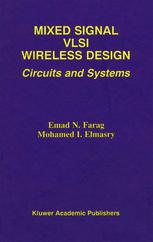

Most ebook files are in PDF format, so you can easily read them using various software such as Foxit Reader or directly on the Google Chrome browser.
Some ebook files are released by publishers in other formats such as .awz, .mobi, .epub, .fb2, etc. You may need to install specific software to read these formats on mobile/PC, such as Calibre.
Please read the tutorial at this link: https://ebookbell.com/faq
We offer FREE conversion to the popular formats you request; however, this may take some time. Therefore, right after payment, please email us, and we will try to provide the service as quickly as possible.
For some exceptional file formats or broken links (if any), please refrain from opening any disputes. Instead, email us first, and we will try to assist within a maximum of 6 hours.
EbookBell Team

0.0
0 reviews“Wireless is coming” was the message received by VLSI designers in the early 1990’s. They believed it. But they never imagined that the wireless wave would be coming with such intensity and speed. Today one of the most challenging areas for VLSI designers is VLSI circuit and system design for wireless applications. New generation of wireless systems, which includes multimedia, put severe constraints on performance, cost, size, power and energy. The challenge is immense and the need for new generation of VLSI designers, who are fluent in wireless communication and are masters of mixed signal design, is great. No single text or reference book contains the necessary material to educate such needed new generation of VLSIdesigners. There are gaps. Excellent books exist on communication theory and systems, including wireless applications and others treat well basic digital, analog and mixed signal VLSI design. We feel that this book is the first of its kind to fill that gap. In the first half of this book we offer the reader (the VLSI designer) enough material to understand wireless communication systems. We start with a historical account. And then we present an overview of wireless communication systems. This is followed by detailed treatment of related topics; the mobile radio, digital modulation and schemes, spread spectrum and receiver architectures. The second half of the book deals with VLSI design issues related to mixed-signal design. These include analog-to-digital conversion, transceiver design, digital low-power techniques, amplifier design, phase locked loops and frequency synthesizers.